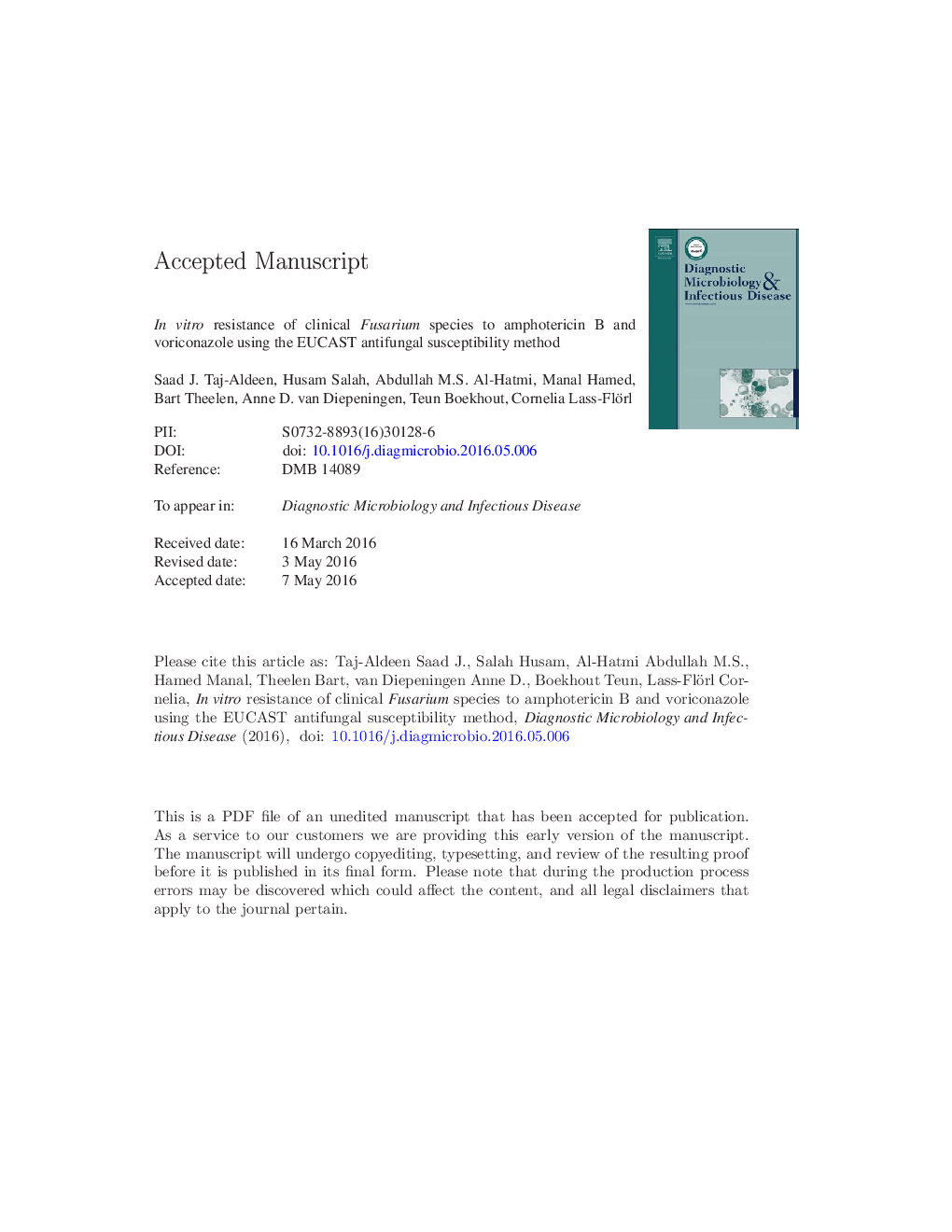| Article ID | Journal | Published Year | Pages | File Type |
|---|---|---|---|---|
| 6115528 | Diagnostic Microbiology and Infectious Disease | 2016 | 22 Pages |
Abstract
Susceptibility testing using the EUCAST-AFST method against 39 clinical Fusarium strains consecutively collected from local and invasive infections during the last 10Â years assessed the in vitro activities of amphotericin B (AmB) and triazole antifungal agents. In addition, the susceptibility pattern of 12 reference strains from the CBS-KNAW Fungal Biodiversity Centre (CBS) was evaluated. In particular Fusarium petroliphilum and F. solani sensu lato were involved in disseminated infections and known for treatment failure. AmB displayed the lowest MICs followed by voriconazole VRC, posaconazole (POC). Itraconazole (ITC) showed high MIC values, displaying in vitro resistance. Clinical isolates were significantly (P <Â 0.05) more resistant to AmB, VRC, and POC, than the CBS reference isolates probably due to previous exposure to antifungal therapy. Resistant profiles to AmB and VRC, which are the currently recommended agents in the guidelines for treatments, and a late diagnosis may be associated with high mortality rate in immunocompromised patients. The present antifungal susceptibility profiles showed that species- and strain-specific differences in antifungal susceptibility exist within Fusarium and that susceptibility testing is important and may improve the prognosis of these infections.
Related Topics
Life Sciences
Immunology and Microbiology
Applied Microbiology and Biotechnology
Authors
Saad J. Taj-Aldeen, Husam Salah, Abdullah M.S. Al-Hatmi, Manal Hamed, Bart Theelen, Anne D. van Diepeningen, Teun Boekhout, Cornelia Lass-Flörl,
